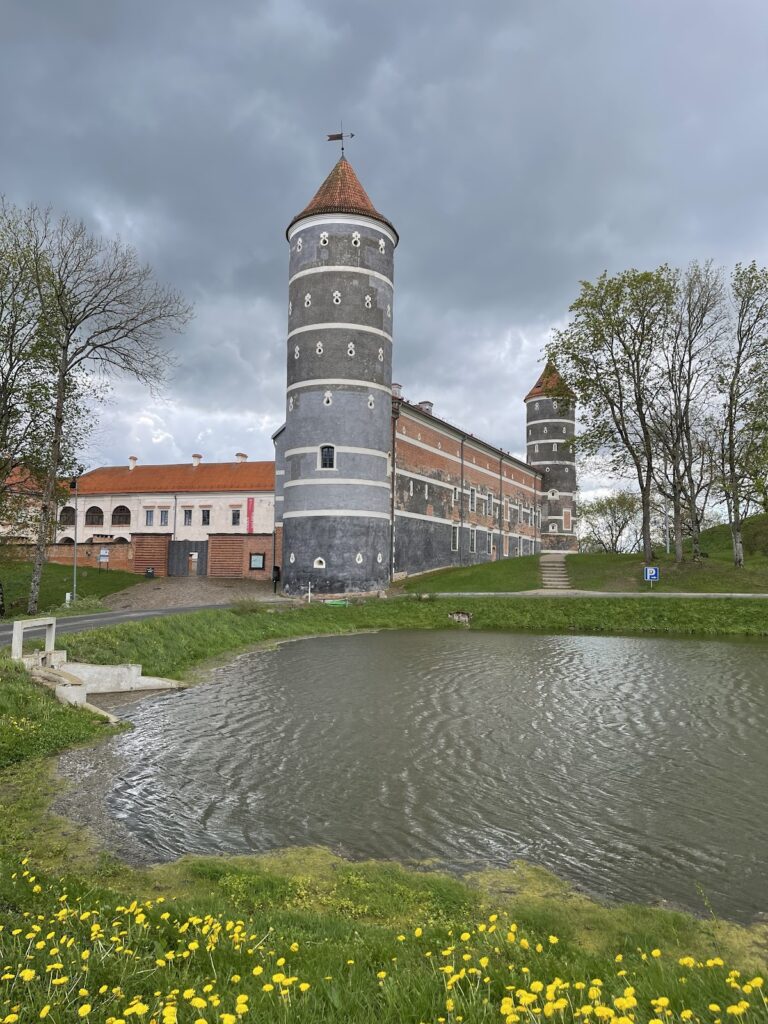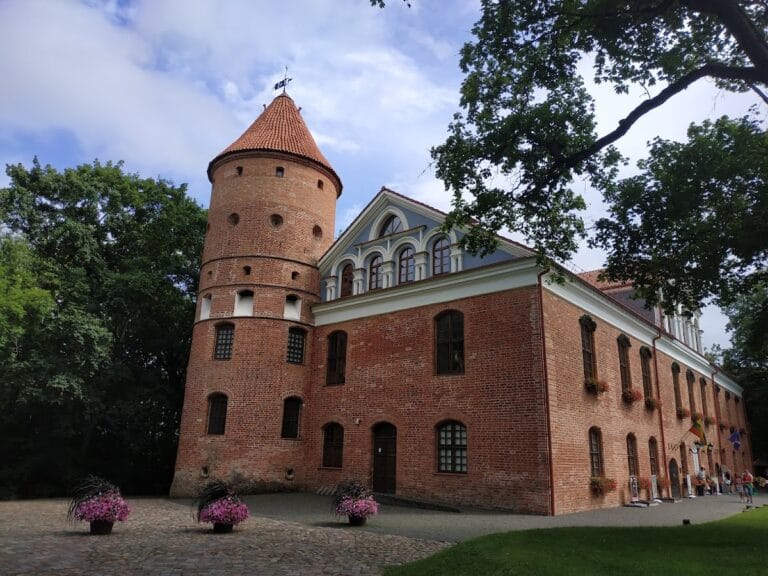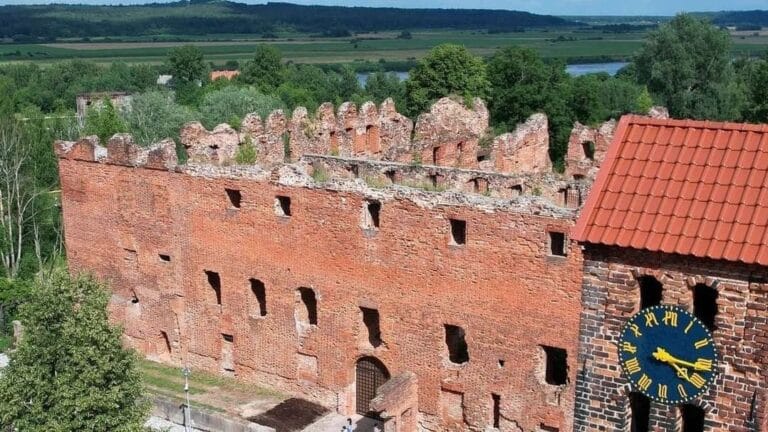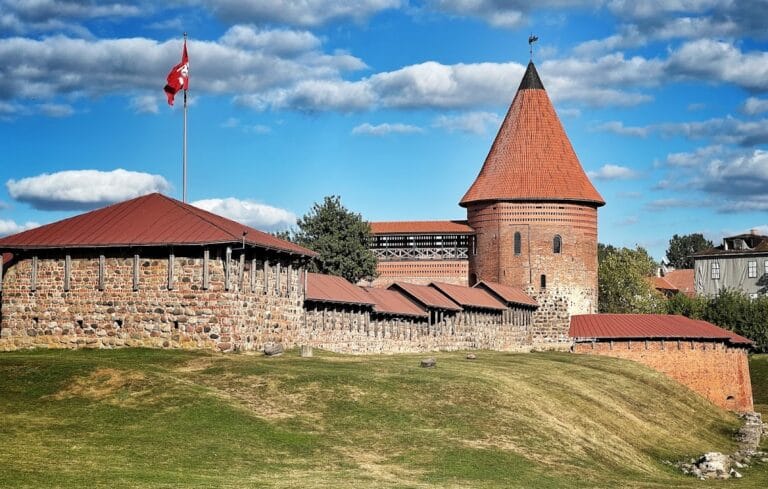Panemunė Castle: A Historic Renaissance Residence in Lithuania
Visitor Information
Google Rating: 4.6
Popularity: Medium
Google Maps: View on Google Maps
Official Website: www.panemunespilis.lt
Country: Lithuania
Civilization: Unclassified
Remains: Military
History
Panemunė Castle stands on the banks of the Nemunas River in the municipality of Panemunės, Lithuania. The site traces its origins to the 14th century and was initially developed by the Teutonic Order during the period known as the Lithuanian Crusade.
The first fortification, a likely wooden structure named Christmemel, was constructed in 1313 by the Teutonic knights. However, in 1314, Grand Duke Vytenis besieged the castle for seventeen days before capturing it. After this victory, the castle became Vytenis’s personal residence. Following the Teutonic Order’s significant defeat at the Battle of Grunwald in 1410, the fortress lost its military prominence and was transformed into an administrative center and noble dwelling.
By 1535, the Lithuanian monarch, King-Grand Duke Sigismund the Old, granted the castle and its surrounding lands to the Stankevičius-Bilevičius family. They replaced the ruins with a wooden manor, marking a shift from fortification to residence. Several decades later, in 1597, the property passed into the hands of János Eperjes, a Hungarian noble and timber merchant. Between 1604 and 1610, Eperjes commissioned the construction of a new brick-and-mortar Renaissance castle, designed by the Dutch architect Peter Nonhaardt, marking a significant architectural development on the site.
The Eperjes family maintained ownership for over a century and a half. Yet financial difficulties emerged toward the end of the 17th century, leading to partial sales and neglect. In 1753, Colonel Leonas Igelstromas purchased the estate, only to sell it six years later to Antanas Anupras Gelgaudas, who held the position of Elder of Samogitia. Gelgaudas undertook substantial renovations, introducing Baroque and Neo-Classical details, and transformed the castle into an elegant residence surrounded by improved parklands.
Antanas Gelgaudas’s son, also named Antanas, played a notable role in the 1831 November Uprising as the commander-in-chief of Lithuanian forces. After the uprising’s defeat and his death, Tsarist authorities confiscated the castle, during which time it fell into disrepair. In 1863, Stanislovas Puslovskis leased the estate and began restoration efforts, though progress was slow and parts of the property deteriorated further.
Entering the 20th century, Panemunė Castle changed ownership multiple times. In 1929, priest Antanas Petraitis acquired the castle and generously donated it to the Society of Saint Francis de Sales. Following Petraitis’s death in 1935, the castle became public property. Some minor conservation work was completed in 1939; however, damage and vandalism occurred during World War II and the subsequent Soviet occupation.
A more comprehensive conservation and partial restoration plan was drafted in 1955. After Lithuania regained independence in 1990, stewardship of the castle was transferred to the Vilnius Academy of Arts, which continued restoration efforts. Over time, the castle evolved into a cultural site housing exhibitions and educational activities.
Throughout its history, the castle has been known by various names, including Gelgaudų pilis, Zamkus, and Vytėnų pilis. These reflect shifts in ownership and the changing identities of nearby settlements.
Remains
Panemunė Castle is a Renaissance-style residence characterized by a rectangular layout enclosed by defensive walls and featuring four corner towers. The structure was primarily built of brick and mortar between 1604 and 1610, reflecting the design of architect Peter Nonhaardt, who also contributed to Vilnius Lower Castle. The castle’s construction includes two two-story wings: an eastern wing serving as the residential quarters and a northern wing dedicated to utility purposes. These wings are connected by defensive walls on the south and west sides, each topped by four-story towers, creating an enclosed courtyard.
The castle sits atop a high bank overlooking the Nemunas River, which provided both a strategic vantage point and scenic views. Surrounding the castle is a park that originally spread across approximately 15.62 hectares. This landscaped area once contained five cascading ponds, an orangery—a greenhouse for citrus trees—and enclosures for fallow deer, underscoring the estate’s function as a noble residence with ornamental grounds. Unfortunately, much of the park suffered substantial damage after World War II due to widespread tree cutting.
Within the park stands a chapel constructed in 1937, adding a religious element to the estate, alongside the protected Gelgaudų oak, a tree that holds cultural significance. Inside the castle, rooms once featured white tiled cylindrical stoves that provided heat, while representative chambers were adorned with friezes portraying antique figures, showcasing Renaissance artistic influences. Large windows on the southern side offered expansive views of both the park and the river beyond.
By the mid-18th century, the castle had fallen into poor condition, with furnaces no longer functioning, ponds dried up, and mills ruined. During restoration efforts in the 18th century, Baroque and Neo-Classical features were incorporated, altering parts of the original Renaissance appearance.
In the 20th and 21st centuries, restoration projects have focused on returning the castle to its original form. These efforts have included rebuilding two defensive towers that had been demolished, reconstructing one of the wings to restore the once closed courtyard, and reinforcing the brick and mortar structures to their historical condition. In recognition of its architectural value, Panemunė Castle was added to Lithuania’s official list of protected monuments in 1961.
Current preservation plans, supported by European Union structural funds, aim to plaster the castle’s facades and replace roofing and windows. These works are organized into phased projects spanning several years, ensuring the careful maintenance of this historically significant Lithuanian site.







